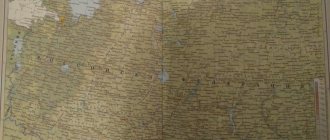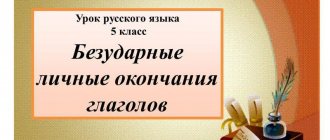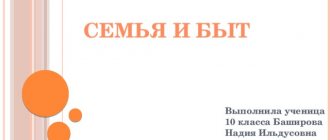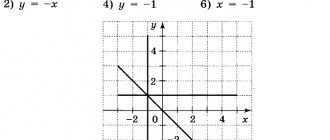Social studies lesson in 5th grade topic “Work and creativity”
Social studies lesson
in 5th grade on the topic “Labor and Creativity.”
Lesson type: “Discovery of new knowledge.”
Lesson type: combined
The purpose of the lesson: to introduce students to an understanding of the essence of human activity based on the creative process and to determine the role of creativity in life.
Lesson objectives:
Educational:
Social studies: compare the concepts of work and creativity, determine the role of creativity in people’s lives.
Educational:
Social studies: develop students’ cognitive interest and creative activity, artistic and aesthetic taste, public speaking skills in the process of preparing messages.
Educational:
Social studies: cultivate patriotism based on traditional types of creativity in Russia.
Lesson equipment: multimedia system, handouts (proverbs in workbooks, pictures depicting traditional types of folk art in Russia and other countries, reflection sheet.
Technologies used: activity-based and personality-oriented approaches, problem-based learning technology, advanced learning technology, ICT technology, health-saving technologies.
Methods used: problem-based - dialogue communication, partially - search, active teaching methods (discussion, group work), explanatory - illustrative.
During the classes:
- Organizing time. Greeting guests.
Good morning, guys. Today we will have an unusual lesson. What do you think makes it so unusual?
Updating previously acquired knowledge. Checking homework.
Invitation to work" Children! You have to work: Don’t run away from work; Oh! From idleness will be born a lot of grief and shame.
He who wants good fame must eat his bread in sweat, It is not for games and fun that people get honor.
Children! Children! Don't be lazy! Labor always bears fruit: If you work from a young age, you will meet old age without worries. Author: Yakov Grot
There are many proverbs about work, since since ancient times people have understood its importance; in the last lesson we got acquainted with proverbs and sayings about work, open your workbooks - in front of you are proverbs about work.
3. Goal setting stage. Setting a learning task. Formulation of the lesson topic. Checking homework.
— How are labor and creativity interconnected?
— Let’s try to formulate the topic of today’s lesson together. What options do you offer?
The topic of today's lesson: “Labor and creativity.”
Write it down in your notebook.
What questions do you think we will answer? Studying this topic?
Stage 4 “Discovery of new knowledge.”
What do you think creativity is?
—What definition does the textbook give us?
— Open page 83 and read the definition yourself.
— What is creativity? What professions are characterized by a creative approach?
— There are many definitions for this word.
Creativity is the creation of something new, valuable not only for a given person, but also for others. Creativity distinguishes the activities of many people - scientists, writers, poets, artists, musicians and many, many others.
— Why are scientists, writers, poets, artists, musicians called people of creative professions?
Creativity – new – original – unique.
— Is it possible to develop creativity in a person? (of course, the basis of a creative approach is a person’s ability to search for something new, the ability to fantasize and imagine, invent, the ability to observe the world around him is very important).
—Can animals work creatively? Why?
Find the answer to this question on page 81. (animals perform the work necessary for their life, and a person creates not only for himself, but also for others; all skills of an animal are inherited, and a person develops his creative abilities and learns creativity, constantly improves).
Primary consolidation of the material.
- So how does creativity differ from simple labor?
—What helps a person to think creatively? (fiction, fantasy, imagination)
— What professions are people referred to as “people of creative professions”?
— Can a hairdresser work creatively? And the teacher? And the scientist?
— What role does creativity play in people’s lives?
— Does the result of labor depend on creativity?
5. Exhibition of student works “Labor and Creativity”
How many of you do your own creative work? Which one? How does creativity manifest itself in your work? What helps you work creatively
Today in the “Interesting Person” section we will learn about very interesting people, scientists. (advanced learning, two students prepared messages and a presentation at home about Konstantin Eduardovich Tsiolkovsky and Stephen William Hawking).
- Listen carefully. And after the story you will have to answer the question: What unites these people?
- Konstantin Eduardovich Tsiolkovsky was very ill as a child and almost completely lost his hearing. He couldn't go to school. I studied on my own. He studied and became a physics and mathematics teacher. He was a creative person. I dreamed about space. Watched the sun and moon. He made many discoveries in astronautics and became a great scientist. He created the work “Exploration of World Spaces by Reactive Instruments.” This work marked the beginning of space exploration. Having set himself the greatest goal and relentlessly pursuing it for almost a quarter of a century, Tsiolkovsky discovered the possibility of achieving unlimited speeds with the help of jet propulsion and, on the basis of this, invented a fundamentally new type of transport vehicles and aircraft - a guided rocket using liquid fuel, which was capable of providing flights into space and, consequently, its exploration by mankind.
- Have any of you heard about this scientist and his discoveries before? What do you remember?
So what unites these people? (creativity, their dreams and fantasies inspired them to great discoveries in science)
- What is the value of these discoveries?
6. Consolidation. Summing up the lesson.
– What new did you learn in the lesson?
7. Reflection
8. Assessing student work.
9. Homework: paragraph 10
Social studies lesson summary on the topic: “Labor and creativity”
Lesson topic: “Labor and creativity”
(master class in the form of an integrated lesson in 6th grade social studies and technology)
Goals:
1. To introduce students to an understanding of the essence of human activity and the creative process
2.Develop the ability to investigate a problem, draw conclusions, establish connections between individual concepts, help students connect the text material with their own experience;
3 To cultivate a love for work, for people of the older generation, awakening students’ interest in the traditions of arts and crafts;
4. Teach students scrapbooking technology and make a product using this technique.
Equipment: Screen, projector, computer, rulers, pencils, paper, tapes.
Concepts to master: labor, creativity, master, artisan, scrapbooking, cardmaking.
Progress of the lesson:
1 Theoretical part. Slide 1 (statement by Sukh.)
The dream of every teacher is to raise a knowledgeable student who can think independently, ask himself questions and find answers to them, pose problems and look for ways to solve them.
Integrated lessons also contribute to the implementation of this. A brilliant example of their implementation was the experience of V.A. Sukhomlinsky, his “lessons of thinking in nature,” which he conducted at the Pavlysh school for six-year-old children.
We'll show you how you can teach an integrated lesson in 6th grade, combining social studies and technology. A fragment of this lesson can be used in social studies lessons when studying the chapter “Labor”, technology in the section “Arts and Crafts”.
Slide 2 Plan
1. What is creativity. 2. Master and artisan. 3. Creativity in art.
E. Serova’s quatrain, written on the board as an epigraph to the lesson, will help to emotionally prepare students for studying the topic:
Slide 3 The breeze asked, flying by: “Why are you, rye, golden?” And in response, the spikelets rustle: “Golden hands grow!” Having drawn the students' attention to this quatrain and having read it expressively, the teacher asks about what kind of person one can say: “He has golden hands.” After listening to the answers, it is useful to lead students to the conclusion that such a phrase can be said about a person who puts into practice what he has learned and what he himself has come up with. This is exactly what will be discussed in this lesson. Turning to the section “What is creativity” allows students to develop their understanding of the differences between the “work” of animals and human labor. When introducing students to the text of the corresponding section, it is useful to ask the question: “Why is the word “work” written in quotation marks when talking about animals?
SLAD 5 differences
The students’ answers and their generalization by the teacher will allow us to draw a conclusion about such distinctive features of a person’s work activity as planning one’s work, creating the necessary machines and mechanisms, and the ability to work creatively. In addition to the material, it is useful to add that creativity can be used in any activity. If a person comes up with something new, interesting and useful, he has proven himself to be a creator.
Fairy tale “Black Hands” (dramatization) Slide 6 mother Sukh.
— What did the author want to say?
2. The section “Master and Craftsman” makes it possible to give students a clear idea that work is not always creative. That is why they distinguish between the work of a craftsman and the work of a master. It is the work of the master that is distinguished by creativity. Additional questions and an assignment to the text of the section can serve to understand these provisions: 1. Predict whether one artisan can make the same products all his life? 2. If a person works without invention and imagination, is it correct to call him an artisan or a master? 3. Will products from the same artist differ from each other? 4. What distinguishes the work of an artisan from the work of a master?
Slide 7 Karinka master and craftsman
It is important to note different opinions in student responses. A craftsman does not always try to change something in his products. It is important for him to make more of these products and sell them. And today you can see a lot of identical wooden and plastic crafts and toys in the markets. A craftsman is a person who masters a craft and knows how to make useful things. A master is a person who has achieved high skill (art) in his craft, who puts ingenuity and creativity into his work, making unusual and original objects. You can consolidate the material in this section using the drawings and photos provided in the textbook, determining which of the depicted objects were made by an artisan and which by a master.
Slide 8 products The teacher can select other drawings, postcards, reproductions and products. 3. There are two types of creativity: scientific and artistic. The section “Decorative and Applied Creativity” is dedicated to artistic creativity. Slide 9 -11
We never cease to be surprised and admire the variety of arts and crafts techniques and the talent of our people. Slide 12
4. Practical part. "Making a gift bag."
Routing
1.Fold and glue the bag
2. Preparing the base
3.Package decoration
The material can be consolidated by organizing students’ work with the words “craftsman”, “master”, “creativity”, “science”, “art”.
- Who were you today, a “master” or a “craftsman”?
Photographing the works and participants of the master class
5. Reflection
Dear Colleagues!
And now we would like you to express your attitude to the topic of the lesson, your opinion about the master class itself
Slide 13 Thank you for your creativity!





